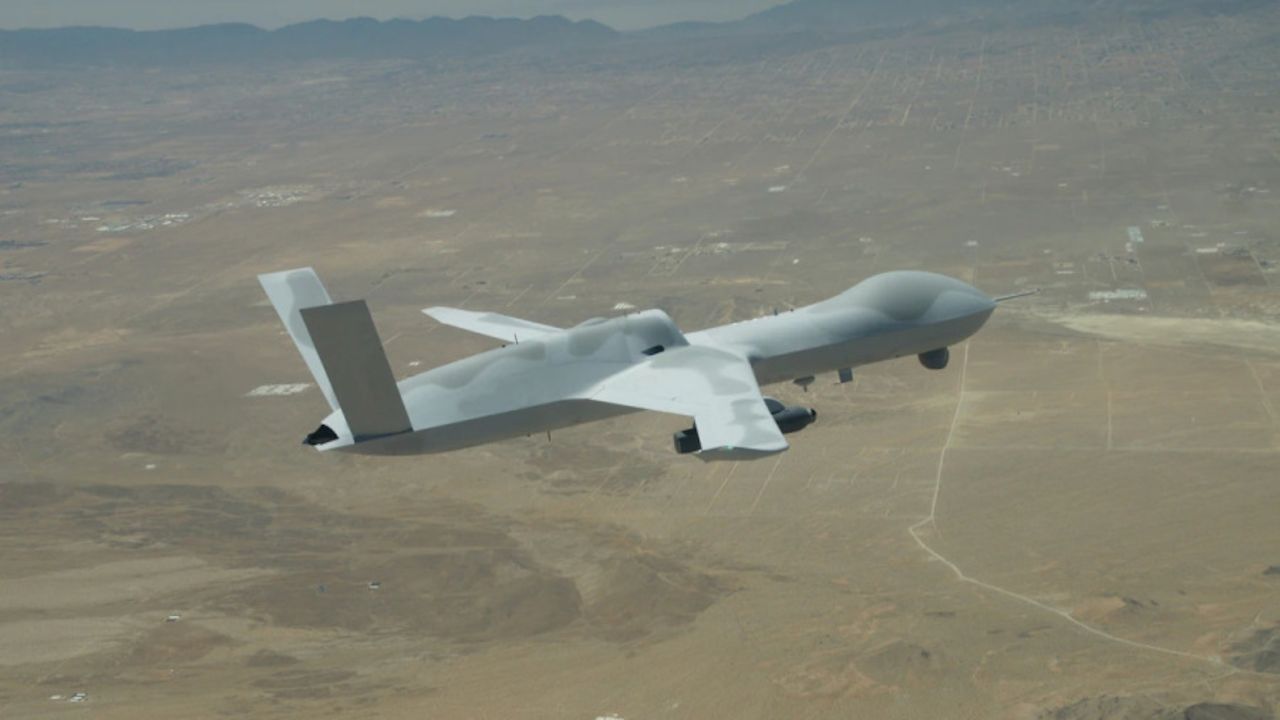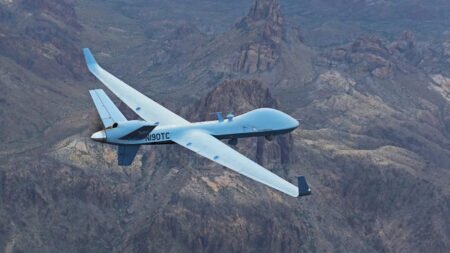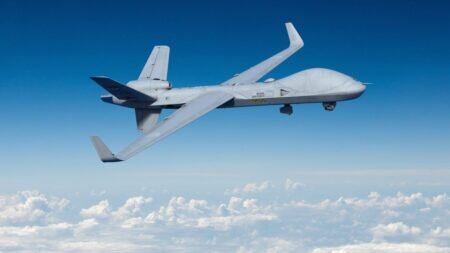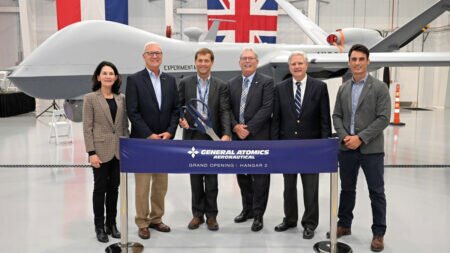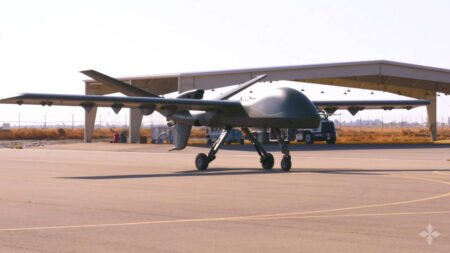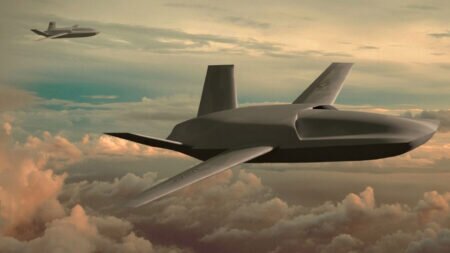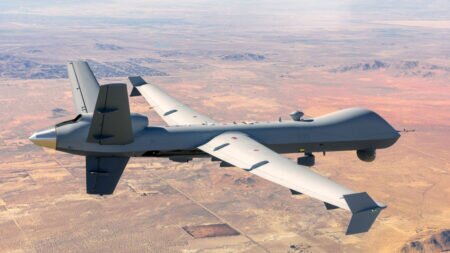The U.S. Air Force’s AI-based Skyborg ‘brain’ successfully flew a General Atomics MQ-20 Avenger last Thursday, marking the second time the software package has piloted a drone, proving that it can be integrated into different drones.
The first flight of the Skyborg Autonomous Control System (ACS) took place April 29 aboard a Kratos UTAP-22 Mako.
“Flying the Skyborg ACS on platforms from two different manufacturers demonstrates the portability of the Government-owned autonomy core, unlocking future multi-mission capabilities for the Joint Force,” Air Force Research Laboratory (AFRL) Commander Maj. Gen. Heather Pringle said in a statement today.
“Once the MQ-20 safety pilot had achieved steady, level flight at altitude, the operator handed over control to the ACS to demonstrate its ability to execute basic flight autonomy behaviors, the AFRL press release said. “The ACS accomplished basic aviation behaviors and responded to navigational commands, while reacting to geo-fences, adhering to aircraft flight envelopes, and demonstrating coordinated maneuvering. It was monitored from a ground command and control station.”
The Avenger is a “Group 5” unmanned aerial system (UAS) under DoD’s drone categorization scheme. Group 5 includes drones with a maximum gross takeoff weight of more than 1,320 pounds; an operating altitude of more than 18,000 feet; and capable of speeds faster than 250 knots. The Mako is a Group 4 drone: heavier than 1,320 pounds but with a lower altitude.
The flight took place during the ongoing Orange Flag Large Force Test Event at Edwards AFB. Orange Flag, held three times a year by the Air Force Test Center’s 412th Test Wing, was last held in March in tandem with the Black Flag exercises led by the 53rd Wing. (Orange Flag focuses on materiel testing; Black Flag on tactics and techniques.) The joint exercise was focused on integrating Joint All Domain Command and Control (JADC2) capabilities and the required changes in C2 ops, according to a March 10 Air Force press release.
Skyborg, one of AFRL’s top-priority Vanguard programs to speed new tech to the field, is exploring multiple missions for autonomous, low-cost drones, including teaming with piloted aircraft. Skyborg has three parts: the low-cost drone, the ACS ‘brain,’ and the on-going experiment campaign called the Autonomous Attritable Aircraft Experimentation (AAAx) tests. The Air Force asked for $58.6 million in its 2022 budget request for Skyborg, with work next year expected to concentrate on further development of the ACS.
The Skyborg program is also a key part of the service’s plans for All Domain Operations, with teaming between piloted and un-piloted aircraft via real-time communications seen as foundational to defeating advanced Chinese and Russian air defense systems.
Pringle serves as the Technology Executive Officer (TEO) for the program; Brig. Gen. Dale White, Air Force program executive officer for Fighters and Advanced Aircraft acts as Skyborg’s PEO.
The Emerging Technologies Combined Test Force (ET-CTF), led by Lt. Col. Adam Brooks, is charged with the flight tests at the 412th Test Wing at Edwards.
Pringle said in February that Skyborg could reach initial operating capability (IOC) as early as 2023.
The Air Force in December announced 24-month contracts for three Skyborg competitors: Boeing, for $25.7 million; General Atomics Aeronautical Systems Inc., for $14.3 million; and Kratos Unmanned Aerial Systems Inc., for $37.8 million. Those prototypes will need to be able to integrate with the ACS, designed by Leidos, serving as Skyborg System Design Agent.
“Future Skyborg experimentation events will explore direct manned-unmanned teaming between manned aircraft and multiple ACS-controlled unmanned aircraft,” the AFRL press release today noted.
Source: breakingdefense

